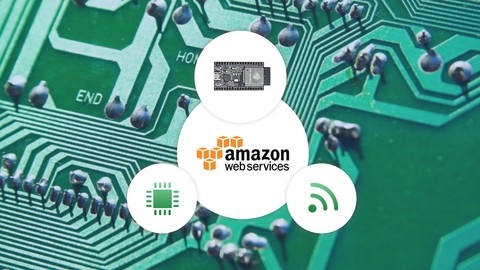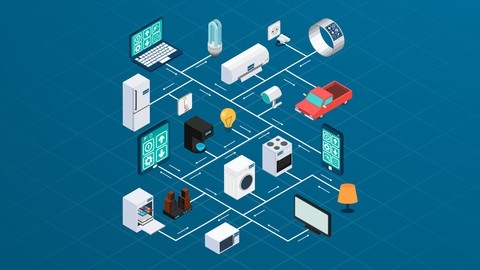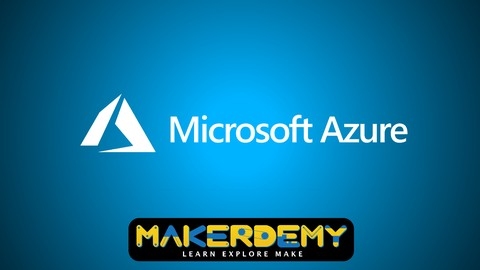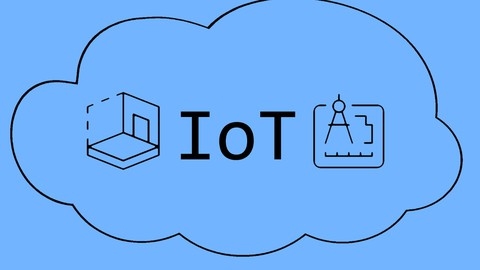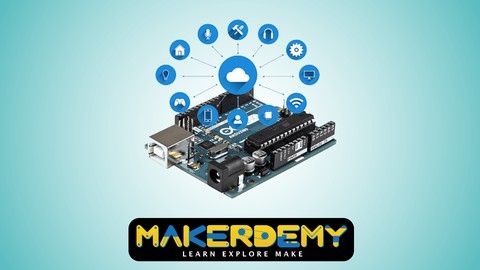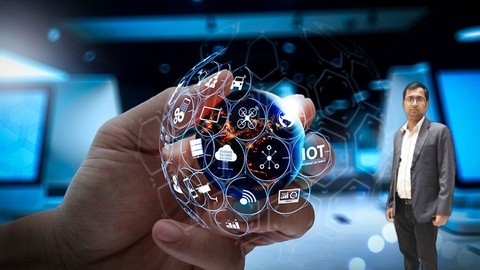The Internet of Things (IoT) is rapidly transforming our world, connecting everyday devices to the internet and enabling them to collect and exchange data.
This interconnectedness opens up incredible opportunities for innovation across various industries, from smart homes and cities to industrial automation and healthcare.
By learning IoT, you can gain the skills to develop cutting-edge applications, improve efficiency, and create solutions that address real-world challenges.
Learning IoT can equip you with a highly sought-after skillset applicable across numerous sectors.
However, navigating the vast landscape of online learning platforms to find the perfect IoT course can be overwhelming.
You’re searching for a course that provides a solid foundation in IoT principles, hands-on experience with popular platforms and technologies, and guidance from experienced instructors.
With so many options available on Udemy, it’s easy to feel lost in the sea of choices.
After carefully reviewing numerous courses, we’ve identified Exploring AWS IoT as the best overall course on Udemy for learning about the Internet of Things.
This comprehensive course dives deep into building and managing IoT projects using Amazon Web Services (AWS), providing a solid foundation in both theory and practical application.
You’ll learn to work with popular microcontrollers, master the MQTT protocol, and leverage AWS services like IoT Core, S3, DynamoDB, and Lambda to create robust and scalable IoT solutions.
While Exploring AWS IoT is our top recommendation, we understand that you might be looking for a course that focuses on specific aspects of IoT or uses different platforms.
That’s why we’ve compiled a list of other excellent IoT courses on Udemy, catering to various learning styles and preferences.
Keep reading to explore these options and find the perfect course to launch your IoT journey!
Exploring AWS IoT
This course on “Exploring AWS IoT” dives deep into building and managing Internet of Things (IoT) projects using Amazon Web Services (AWS).
You start with the basics, like understanding how devices like the popular ESP32 and ESP8266 microcontrollers can communicate with each other.
You quickly progress to mastering the MQTT protocol—the language of IoT, and learn how to use tools like MQTT.fx to test these connections.
The course doesn’t shy away from hands-on programming.
You’ll work with various programming languages and frameworks, including Arduino, MicroPython, and Mongoose OS, to program your devices.
You even explore the world of Raspberry Pi using the AWS IoT Device SDK, connecting it to the AWS IoT Core—the central hub for your IoT data.
You’ll tackle data like a pro.
You learn how to securely store this data using AWS S3, manage real-time data with DynamoDB, and even handle large-scale data processing with Kinesis Firehose.
You learn to use AWS Quicksight to find exciting trends by visualizing the collected data.
This course goes beyond the basics by introducing you to powerful tools and services.
You learn how to use AWS Lambda for serverless computing, set up notifications with SNS, and dive into real-time data analysis with AWS IoT Analytics.
You’ll master AWS Device Shadows to manage the state of your devices and explore Timestream for managing time-series data, which you can visualize using tools like Grafana.
Complete Guide to Build IOT Things from Scratch to Market
This course is ideal if you’re eager to learn about the Internet of Things and build your own devices.
You’ll begin with the basics, understanding what IoT is and its potential across various industries.
The course then delves into the core components of IoT, teaching you about hardware like the Arduino UNO and NodeMCU, as well as software like the Arduino IDE, a programming platform for writing code that controls your devices.
You’ll develop your programming skills using the Arduino IDE, learning how to write code to interact with sensors, control lights, and send data over the internet.
The course teaches you about different communication protocols like TCP/IP, which governs how data is sent and received over the internet, and how to use Wi-Fi and Ethernet to connect your devices.
You’ll get hands-on experience with various sensors, such as those that detect light, motion, and temperature, and learn to incorporate them into your projects.
The course emphasizes practical application, guiding you through building three real-world IoT projects.
You’ll create a smart lighting system controlled through your smartphone using the BLYNK platform.
You’ll also build a motion detector that sends email alerts through the Carriots platform.
Finally, you’ll design a panic alarm for the elderly, utilizing the Thinger.io platform for sending notifications.
Through these projects, you’ll interact with cloud platforms, essential for storing data and remotely controlling your devices, and gain experience with mobile app integration, allowing users to control their IoT devices seamlessly.
Introduction to Microsoft Azure IoT
You’ll start with the basics, exploring the architecture of Azure IoT and setting up your free account.
Hands-on projects immediately engage you, like connecting a SparkFun ESP32 Thing to your Azure IoT Hub.
You’ll learn to code in Arduino and send sensor data to your hub.
The course then moves on to using Python with your Raspberry Pi, connecting an HC-SR04 Ultra-Sonic sensor and visualizing the collected data in the Azure portal.
You’ll gain valuable experience working with the Service Bus Topic and creating Shared Access Policies, allowing you to control your devices effectively.
Beyond the basic setup, you’ll delve into advanced concepts like scheduling actions and sending user notifications.
You’ll explore various tools for visualizing sensor data and gain a strong understanding of the security aspects of the Microsoft Azure IoT platform, including setting up X.509 security in your Azure IoT Hub.
This course is well-structured and provides a solid foundation for individuals looking to build and manage their own Internet of Things solutions using Microsoft Azure IoT.
Azure IoT - The Complete Guide
This course is your passport to becoming an expert, guiding you from the very basics of cloud computing to the intricate workings of Azure’s powerful IoT solutions.
You’ll begin by building a solid foundation, exploring essential cloud concepts and getting hands-on experience with the Azure Portal – your control center for managing Azure services.
From there, you’ll dive into the heart of Azure IoT, mastering key concepts like IoT Hub, a central point for managing your connected devices.
You’ll learn how to communicate with these devices using protocols like MQTT, understand the concept of Device Twins, which allow you to create digital representations of your devices in the cloud, and even master the art of securely enrolling devices using the Device Provisioning Service (DPS).
This course isn’t just about theory; it’s designed to equip you with practical skills.
You’ll gain confidence using powerful tools like Azure CLI and PowerShell, giving you direct control over your Azure environment.
You’ll learn to send and receive messages between devices and the cloud, mastering real-time control with Direct Methods.
You’ll even delve into managing device updates with Jobs and monitor the health of your devices using metrics and logging.
Looking for a simpler way to build IoT applications?
This course introduces you to IoT Central, a platform that allows you to create applications without needing complex coding.
You’ll learn to configure device templates, manage rules and actions, and even create custom dashboards to visualize your data.
Need to bring intelligence closer to your devices?
You’ll discover how to use IoT Edge to deploy modules directly onto devices, making them more responsive and efficient.
The course also explores the fascinating world of Digital Twins, allowing you to create detailed digital models of your physical devices and environments.
These models enable you to simulate how your devices interact, making it easier to design and optimize your IoT systems.
Finally, the course takes you on a journey through security best practices, exploring how to protect your devices and data from unauthorized access.
You’ll learn about Defender for IoT, a powerful security service that helps you monitor and protect your IoT environment.
And as a bonus, you’ll receive the Azure IoT Handbook, a handy resource that summarizes all the key concepts and techniques you’ve learned, ensuring you’re always ready to put your new skills into practice.
Introduction to Internet of Things(IoT) using Arduino
This course guides you through the exciting world of the Internet of Things (IoT) using Arduino.
You start with the basics, learning about IoT and the hardware components involved.
You then discover how to control home appliances using Arduino and a relay module.
The course teaches you about the Bluetooth HC-06 module, including its features and how to configure it.
You will then dive into Bluetooth networking, an essential skill for IoT projects.
You will gain practical experience by building a home automation system controlled by voice commands.
This project covers everything from setting up the circuit to programming your Arduino.
You will learn how to define voice commands, troubleshoot any issues, and upload code to your Arduino.
A real-time demonstration allows you to see the project in action, connecting your device to a mobile app.
This course introduces you to the Ethernet Shield, a tool that connects Arduino projects to the internet.
You learn to use the Blynk app, a platform for creating user interfaces and connecting your Arduino device.
This includes setting up an account and obtaining an authentication token, providing the foundation for creating more complex IoT projects.
IoT Application Development with the ESP32 Using the ESP-IDF
This course provides a comprehensive introduction to developing Internet of Things (IoT) applications using the ESP32 microcontroller and the Espressif IoT Development Framework (ESP-IDF).
You will learn how to set up the development environment, including installing the Eclipse IDE and configuring the ESP-IDF build system with CMake.
The course starts by covering the ESP32 hardware and its various development kits.
You’ll then dive into the ESP-IDF, exploring topics like FreeRTOS, error handling, and coding style guidelines.
Additionally, you’ll learn how to work with the Components & Sensors Library, which allows you to integrate sensors like the BME680 into your projects.
One of the core projects you’ll build is an RGB LED application that demonstrates how to control an LED’s color using the ESP32’s GPIO pins.
This hands-on experience will prepare you for more advanced topics, such as setting up a WiFi connection and creating an HTTP server to serve web pages from the ESP32.
The course also covers over-the-air (OTA) firmware updates, allowing you to remotely update your ESP32 devices without physical access.
You’ll integrate sensors like the DHT22 temperature and humidity sensor, and learn how to display sensor data on a web page served by the ESP32’s HTTP server.
Another key aspect is WiFi connection management, including implementing a WiFi connect feature and displaying connection information on a web page.
You’ll also learn how to use non-volatile storage (NVS) to store and retrieve data, even after the ESP32 is powered off.
The course explores advanced topics like using interrupts and semaphores to create a WiFi reset button, synchronizing time using the SNTP protocol, and displaying the ESP32’s access point SSID on a web page.
Finally, you’ll dive into AWS IoT, learning about MQTT, mTLS, AWS security policies, and JSON data formats.
You’ll build an application that publishes and subscribes to MQTT topics, enabling communication between the ESP32 and AWS IoT services.
Throughout the course, you’ll have access to the source code repository, making it easy to follow along and experiment with the examples provided.
Fundamentals of IoT (Internet of Things)
This course on the fundamentals of the Internet of Things (IoT) takes you on a journey from basic concepts to practical applications.
You start by understanding what IoT is and how it’s different from machine-to-machine (M2M) communication.
You explore the architecture of IoT, learning how devices connect and the crucial role the cloud plays.
You then delve into the fascinating world of IoT applications, exploring examples like intelligent homes with smart egg trays and weather stations, and smart transportation systems.
You discover how these applications work by learning about the technologies behind them, including sensors and actuators.
You examine different types of sensors available and how they collect data, and you learn about the communication protocols that allow devices to interact.
The cloud takes center stage as you explore its role in IoT, particularly in “Sensing as-a-Service” and managing massive amounts of data.
You also confront the real-world challenges of building and managing IoT systems, getting a clear picture of the complexities involved.
Finally, you can test your understanding of the course material through a comprehensive assessment.
Building Internet of Things Projects with Arduino IOT Cloud
This course on building Internet of Things projects provides a structured path from beginner to intermediate-level IoT development.
You begin by understanding the fundamental concepts of the Internet of Things and the Arduino IoT Cloud.
Setting up your Arduino MKR WIFI 1010 board and a free Arduino IoT Cloud account lays the groundwork for your hands-on journey.
You quickly dive into your first project, controlling an LED from the cloud, learning basic circuit wiring and cloud configuration.
As the course progresses, you tackle increasingly complex projects, each building upon the previous one.
You learn to read data from sensors, respond to events like button presses, and even build a motion sensor alarm that sends alerts to your phone.
The course doesn’t shy away from practical challenges, introducing you to techniques like debouncing and the use of third-party libraries to ensure reliable operation of your projects.
You then explore more advanced concepts like using a DHT-22 sensor for temperature and humidity readings.
This culminates in building a self-regulating temperature control system, complete with a transistor-controlled fan.
You delve into circuit diagrams, understand the logic behind the code, and gain experience in configuring and testing a complete IoT system.
The course concludes by introducing you to IFTTT, a powerful service for connecting your projects to a wider ecosystem of apps and services, opening up a world of possibilities for your future endeavors.
Also check our posts on:
